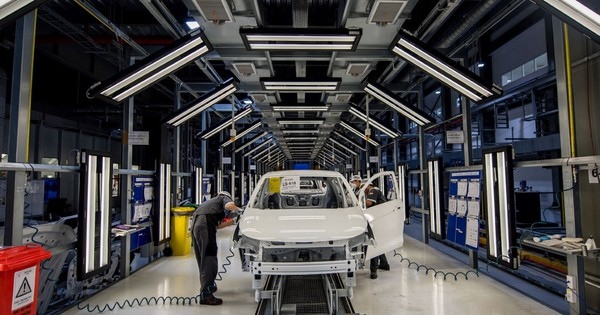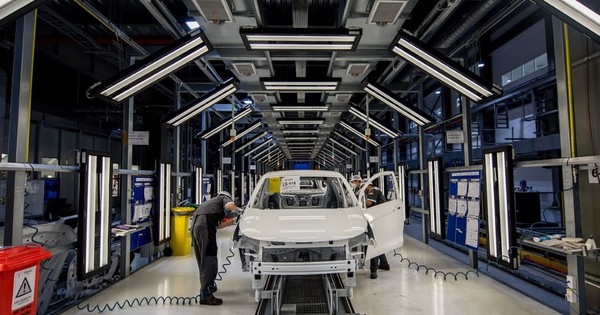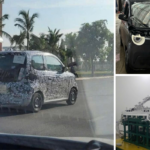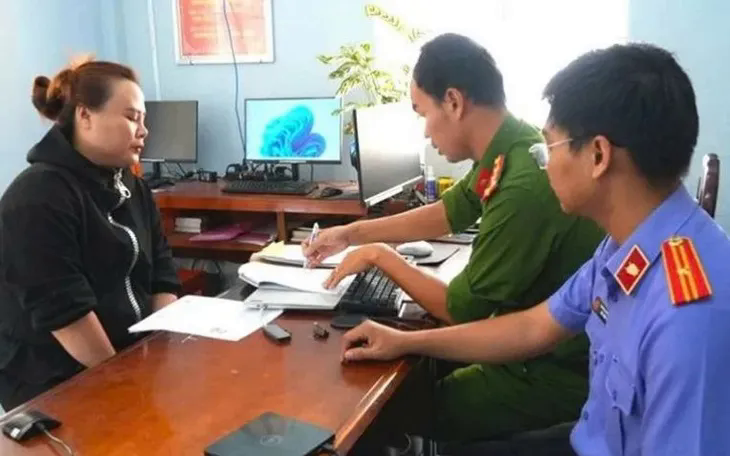Vietnam is one of the fastest-growing automotive markets in Southeast Asia, with demand expected to continue surging, favoring the automotive manufacturing and assembly industry.
A Lack of Capable Companies
The expansion of major players in automotive manufacturing and assembly, such as VinFast, THACO, and Hyundai Thanh Cong, presents a golden opportunity for the supporting industry to make a breakthrough in the coming time.
However, it is worth noting that despite numerous policies implemented by the government and various ministries, the localization rate in the automotive industry remains low.
According to the Planning for the Development of Vietnam’s Automotive Industry by 2020, with a vision towards 2030, the localization rate was targeted to reach 30-40% by 2020, 40-45% by 2025, and 50-55% by 2030. However, the current average localization rate stands at just 12-20%.
Economist Pham Chi Lan points out that most supporting industries in Vietnam are small and medium-sized enterprises (SMEs) lacking investment in technology and large-scale production capabilities. Additionally, there is a weak connection between automotive manufacturers, assemblers, and domestic supporting companies. “The supporting industry lacks leading domestic companies to spearhead the supply chain,” Lan said, noting that foreign carmakers like Toyota and Mitsubishi consider Vietnam merely an assembly base while favoring Thailand and Indonesia for their supporting industries.

Domestic carmakers are implementing solutions to increase localization, including strong support for auxiliary businesses. Photo: NGUYEN HAI |
In the draft strategy for the development of Vietnam’s automotive industry towards 2030, with a vision towards 2045, the Ministry of Industry and Trade has outlined a clear direction to boost the supporting industry. Specifically, the goal is to meet 55-60% of the demand for auto parts and components for domestic manufacturing and assembly by 2030, increasing to 80-85% by 2045. This also involves the increased application of technology to manufacture critical components such as powertrains, transmissions, engines, and car bodies. Supporting industry enterprises must also enhance cooperation with leading automakers and select the type of parts and components they can produce to assume a pivotal role in the global production and supply chain.
The vibrant automotive market presents a significant opportunity for the automotive industry, particularly the supporting industry, to thrive. Recently, VinFast Global’s Vice President, Thai Thi Thanh Hai, shared that VinFast aims to achieve an 80% localization rate by 2026. In terms of production volume, the Vietnamese carmaker targets the manufacture of over 500,000 automobiles by 2027, progressing towards 1 million vehicles per year from 2030. To meet the surging demand and share growth opportunities with Vietnamese enterprises, VinFast will expand its domestic supply chain with special incentives for local supporting companies.
Specifically, VinFast will offer a 50% discount on land rent for the first three years and a 20% discount for the next five years to partners investing in factory construction at its two automotive production complexes in Hai Phong and Ha Tinh. VinFast also commits to guaranteeing the output for partner companies. Additionally, the company will facilitate connections between Vietnamese enterprises and foreign partners for technology transfer, knowledge exchange, and a gradual enhancement of international competitiveness to integrate into the global supply chain.
Addressing the Right Bottlenecks
According to Pham Chi Lan, the presence of major domestic automotive players, including VinFast, presents a significant opportunity for supporting companies. The government needs to establish appropriate incentive policies because foundational industries cannot develop independently without the accompaniment of the supporting industry. “Enterprises should also proactively enhance their competitiveness to meet international standards,” Lan noted.
Associate Professor Dr. Tran Dinh Thien, a member of the Prime Minister’s Economic Advisory Group, suggested that the most effective way to support enterprises in the automotive auxiliary production sector is through the automotive manufacturers and assemblers themselves. Only they can fully grasp their supply chain, identify the necessary support links, the required number of supporting enterprises, and the priority level of support. If the government allocates funds to enterprises based on their registration, the support will be fragmented, lack linkage, and be ineffective.
Current policies for the supporting industry are scattered and not very effective, according to Dr. Truong Thi Chi Binh, Vice President of the Vietnam Supporting Industries Association. She emphasized that without focusing support on the right bottlenecks, the chances of enterprises advancing are slim. “Auxiliary enterprises are mainly small and medium-sized, struggling to access land and low-interest loans. Meanwhile, entering the automotive industry requires massive new investments, but land rent and interest rates are currently too high,” Dr. Binh pointed out the bottlenecks and proposed the need for substantial support policies for capital and land.
|
Tax Exemption for Automotive Supporting Industry Extended Until the End of 2027 According to Decree 21/2025 of the Government, the tax incentive program for the automotive supporting industry will be extended until December 31, 2027. Previously, this policy was implemented in 2023 and 2024. Specifically, a 0% tax rate is applied to raw materials, supplies, and components that cannot be produced domestically for the production and processing of priority supporting products for the automotive manufacturing and assembly industry. According to the Ministry of Finance, tax policies act as a lever to encourage enterprises to expand their scale, improve equipment, and gradually integrate into the global value chain. This also brings the Vietnamese automotive industry closer to its modernization and deep integration goals. |
MINH PHONG
– 08:02 15/06/2025
“The Key to Unlocking Automotive Localization”
“The automotive industry’s localization ambitions hinge on a robust ecosystem of supportive industries. To turn this dream into a reality, a comprehensive set of policies is needed to foster the growth of these ancillary industries. It’s time to shift gears and accelerate the development of a vibrant and self-sustaining automotive ecosystem in our country.”





















